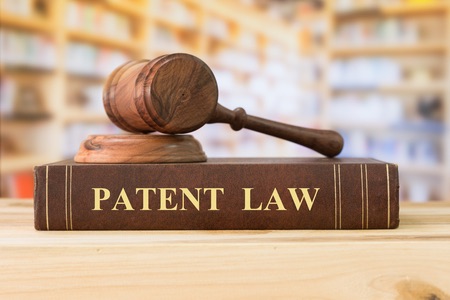This article is written by Sheetal J pursuing Diploma in Intellectual Property, Media, and Entertainment Laws from LawSikho.
Table of Contents
Introduction
In this article, I provide an explanation for the interplay between patent regulation and antitrust regulation and describe the hyperlink among those very crucial regions of government. The connection between patent law and antitrust law has challenged legal minds since the emergence of antitrust law in the late nineteenth century. One encourages monopoly, whereas the other restricts it. Patent law offers the right to exclude competition while antitrust law targets somebody who does it.
“The Supreme Court in Atari Games Corp. v. Nintendo of America, Inc. has held that both patent rights and antitrust laws are complementary to each other. Both the bodies encourage innovation and competition. If there are no intellectual property rights, the idea of investment and innovation would be diminished, that would oppose the very need of antitrust laws which is to promote the well-being of consumers by spurring efficiency, innovation, and investment.”
Having said this, let’s go through the complex nature of both the bodies of law which may seem to conflict because the usage of similar legal terminologies yet has different meanings.
Is protection necessary for patent rights owners and consumers?
At first, the patent system and antitrust laws seem to conflict as a result of the legal system providing the owner of patent rights a right to exclude competition for a restricted number of years, whereas antitrust law protects strong competition. The conflict between the two laws happens when one among the laws gets out of its lane and gets within the means of another and, consequently, hinders competition and innovation.
The concept of exclusivity
- The antitrust notion of exclusion relies on a picture of occupying a competitive sphere and policing that sphere to prevent the incursion of potential rivals. The antitrust image of exclusion relies on the notion that a firm with power during a very competitive sphere keeps out people who would enter the sphere to compete
- A patent will grant the right to exclude; however, the notion of exclusion in patent law is totally different from that in antitrust. A patent doesn’t confer any affirmative rights in any respect. Rather, a patent offers the right to exclude others from creating, exploiting the invention, with the caveat that a number of those others could have their claim to exclude. For example, let’s say John discovers that a substance cures brain tumors. John can get a patent covering the use of the substance for the specific purpose of treating brain tumors. Now, the original inventor holds a patent that covers any use of the product. John holds a patent covering a particular use of the product. Each can exclude the other, and anyone who wants to use the product to treat brain tumors must negotiate with both patent holders. Additionally, neither patent holder can use the product to treat brain tumors without the consent of the other.
What is known as monopolization?
- Antitrust law defines certain kinds of behavior that are impermissible on the road to domination. This behavior is represented as monopolization or attempted monopolization.
- Patent law traditionally has allowed patent holders to suppress their inventions, as a result, those customers will get nothing, at least for the term of the patent. Thus, the notion that a patent holder is a monopolizer, which is often bandied about, underestimates the amount of harm that we would permit from a patent holder. Understanding these shades of meaning is crucial for navigating the intersection between patent and antitrust.
Overprotection of patent rights
The general sentiment is that patent rights are getting overprotected, whereas the standards to grant patents are lower. Scholars argue that excessively expansive patent protection and excessively excessive patents weaken innovation; unnecessarily narrowing the public domain and hindering the innovative ideas of others. There are widespread and growing issues concerning the patent application method. The notion is that the PTO issues way too many “questionable” patents that are unlikely to be found valid, supporting a radical review of the type one sees in patent proceedings.
The inefficiencies of the application method including protection and enlargement of patent rights have contributed to a different problem: the skyrocketing variety of issued patents, utility patent protects patent which includes any new and useful process, the machine or composition of matter like a Manolo Blahnik shoes.
The more patents, the more innovations?
Ideally, yes. However, that’s not the case as a result of an outsized variety of patents having very little or no worth. On the other hand, the skyrocketing variety of issued patents may have negative effects on competition and innovation. However, it’s fairly straightforward to get a patent, including “questionable” ones and provided that it is accepted that the majority of patents have very little industrial prospective and the inventor doesn’t even have an obligation to use the granted patent, and the inventor can simply get a patent and accept it only to harm competitors.
Case study: The inadequacy of intent standards in patent law
- The fairly recent decision in Dippin’ Dots, arguably the second most disputable patent case in recent history, could be a model of the inadequacy of intent standards in patent law that inherently increases expected costs from legal errors.
- The dispute was between Dippin’ Dots and its former distributors. The distributors terminated the contract with Dippin’ Dots to compete against it. Dippin’ Dots was the holder of a patent covering a technique for creating a type of cryogenically prepared beaded novelty ice cream product.
- The defendants defended on the grounds of inequitable conduct means there is a breach of the applicant’s responsibility and truthfulness during patent prosecution by misrepresenting or omitting material information with the intent to deceive and “walker process antitrust claim” under Section 2 of Sherman Act.
- This was based on certain presales of the patents that would make the patent invalid.
- The doctrine of inequitable conduct and the walker process basically works as a defense in patent infringement cases. The main idea behind the doctrine of inequitable conduct and “walker process antitrust claim” is to respond to the invalid patents acquired by deceptive conduct before the PTO.
- The court held that the claimants had to appropriately show separate evidence of Dippin’ Dots fraudulent intent because the court found the omission of the prior sale was sufficient enough to prove to intent for inequitable conduct but it was not sufficient to prove the intensified standards of deceptive intent for walker process fraud.
- This highly controversial case demonstrates the inefficiency of intent standards in patents.
- Due to this increased costs from legal errors, it can lead to overdeterrence costs. It causes potential patentees to go way beyond the feasible level of precaution in order to avoid penalties for misrepresentation or omissions.
- Let’s go through another example eBay v. MercExchange which deals with a four-factor test to determine equitable reliefs. According to this case, an injunction should not be automatically issued based on patent infringement; instead, it should go through the four-factor test. According to the four-factor test, the plaintiff seeking a permanent injunction must demonstrate that there is an irreparable injury, monetary damages are inadequate, remedy in equity is warranted also that the public interest would not be harmed by a permanent injunction.
These principles apply to disputes arising under the Patent Act. The injunction would be issued in accordance with the principle of equity.
According to the Court, the choice whether or not to grant or deny injunctive relief rested among the just discretion of the district courts, and such discretion had to be exercised in line with principles of equity.
Conclusion
The connection between antitrust laws and patent rights are complementary to each other means both these notions encourage innovation and competition. That being said, when we talk about competition between these two areas of law, it can be difficult to understand the idea behind both areas because both patent rights and antitrust laws use similar terminology. Even though words are similar the notion behind them differs which confuses. Conflict arises because of this mainly and the laws are generic rather than specific. A case study has been explained which talks about inequitable conduct and walker process claims. The doctrine of inequitable conduct and the walker process basically works as a defense in patent infringement cases.
Reference
- https://web.stanford.edu/dept/law/ipsc/pdf/feldman-robin.pdf
- https://www.mondaq.com/unitedstates/patent/750422/ip-antitrust-know-how-2018
- https://ideaexchange.uakron.edu/cgi/viewcontent.cgi?article=1043&context=akronintellectualproperty
- https://ideaexchange.uakron.edu/akronintellectualproperty/vol5/iss1/2/
- https://www.jdsupra.com/legalnews/antitrust-walker-process-claims-not-60734/#:~:text=A%20 Walker%20Process%20claim%20 arises,necessarily%20inv
Students of LawSikho courses regularly produce writing assignments and work on practical exercises as a part of their coursework and develop themselves in real-life practical skills.
LawSikho has created a telegram group for exchanging legal knowledge, referrals, and various opportunities. You can click on this link and join:
 Serato DJ Crack 2025Serato DJ PRO Crack
Serato DJ Crack 2025Serato DJ PRO Crack











 Allow notifications
Allow notifications



